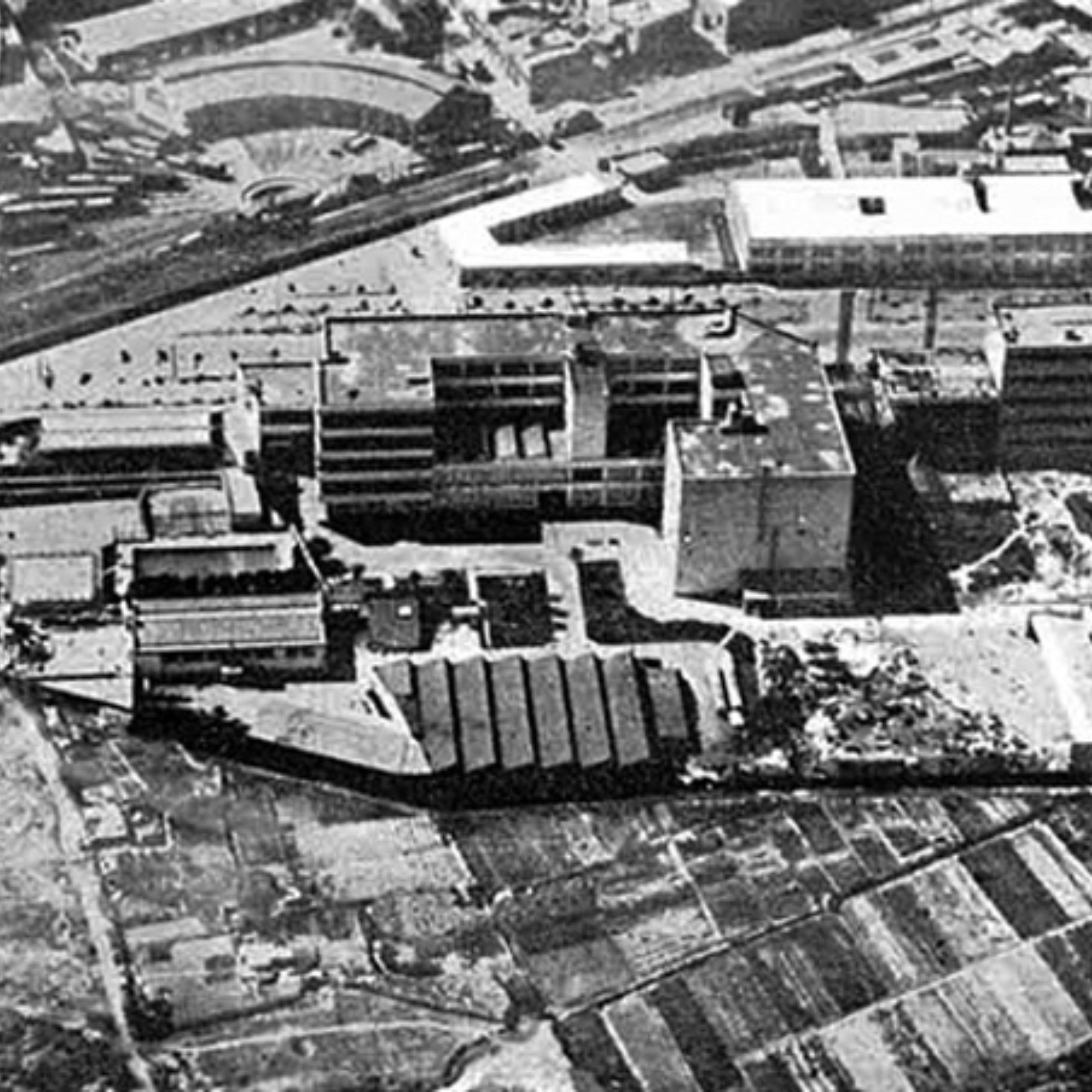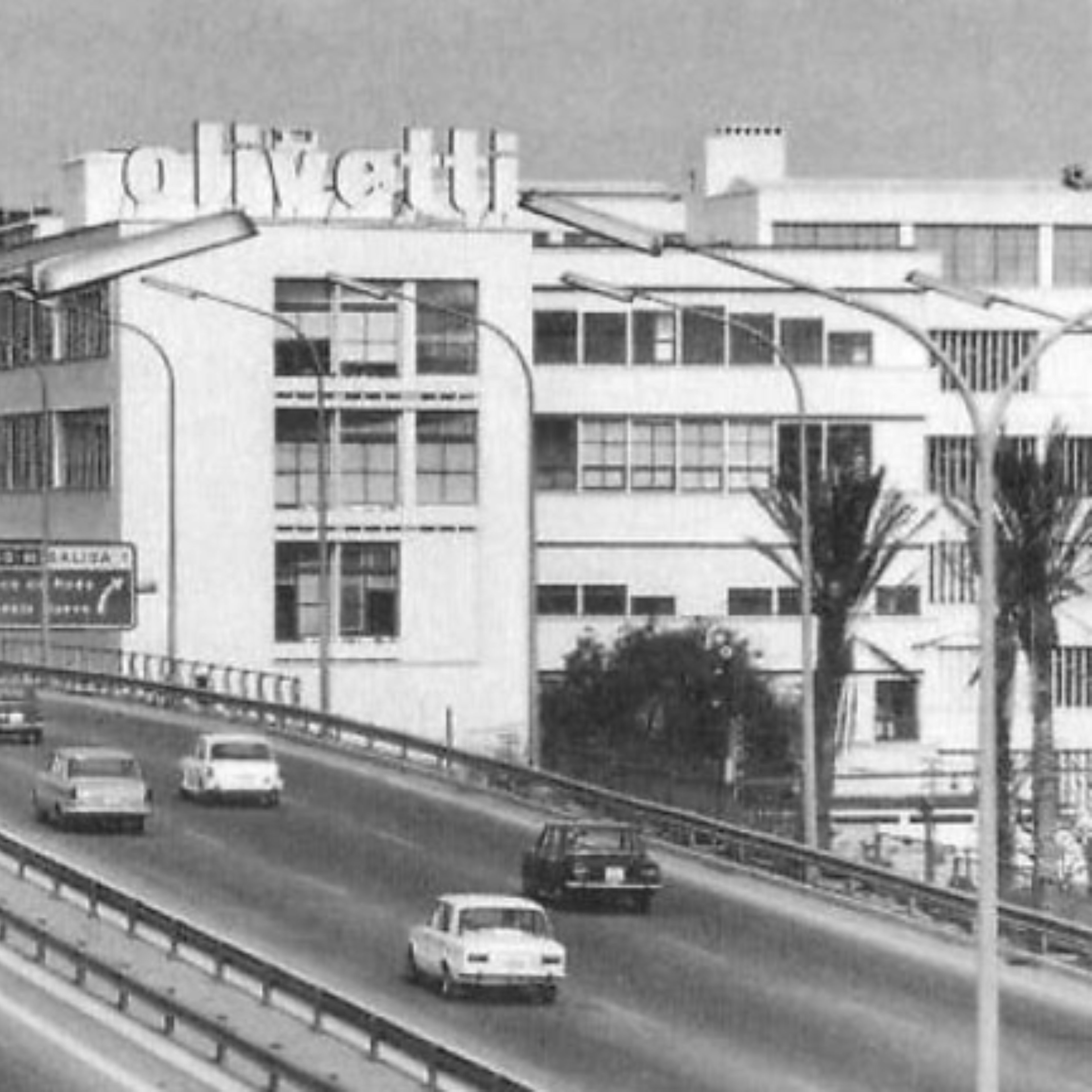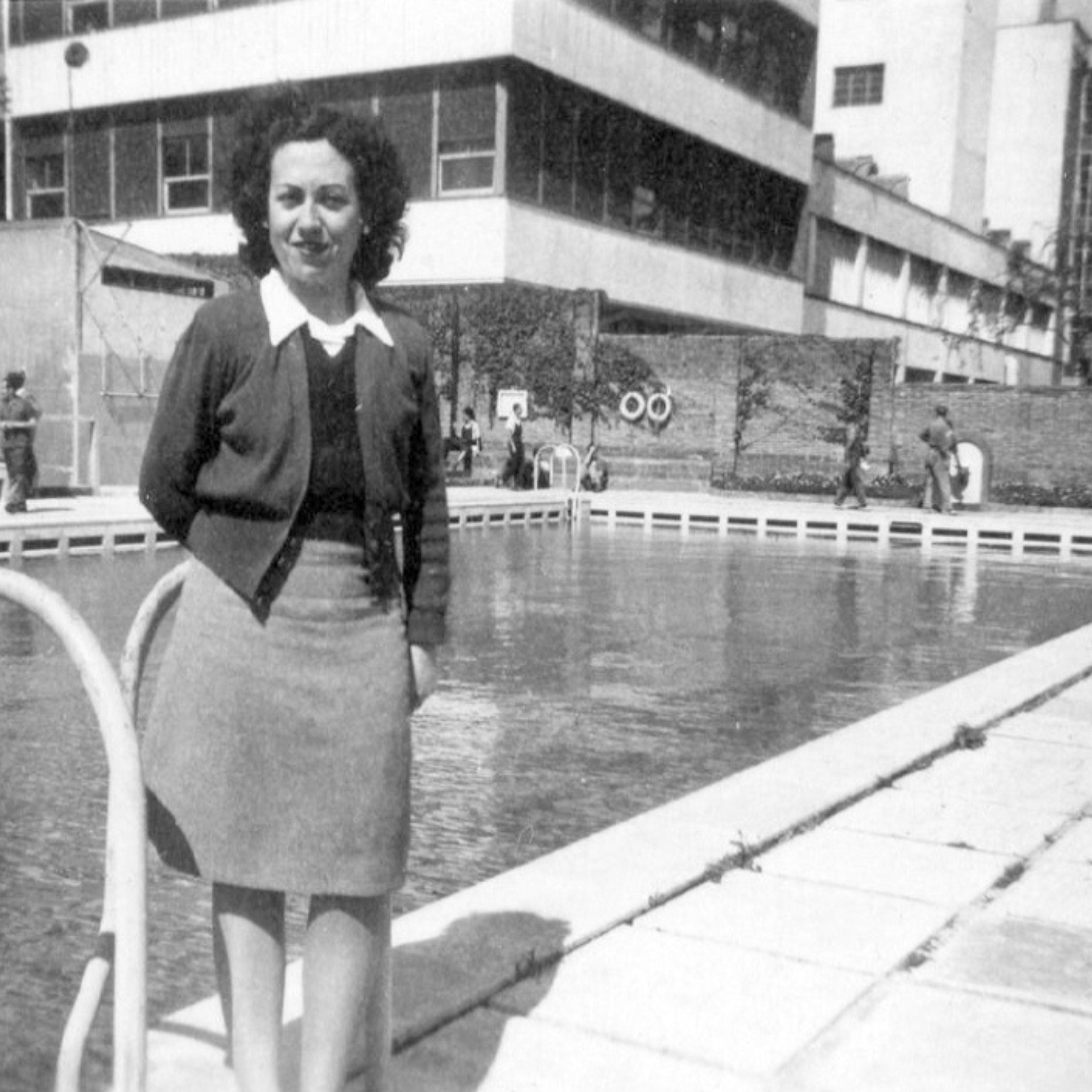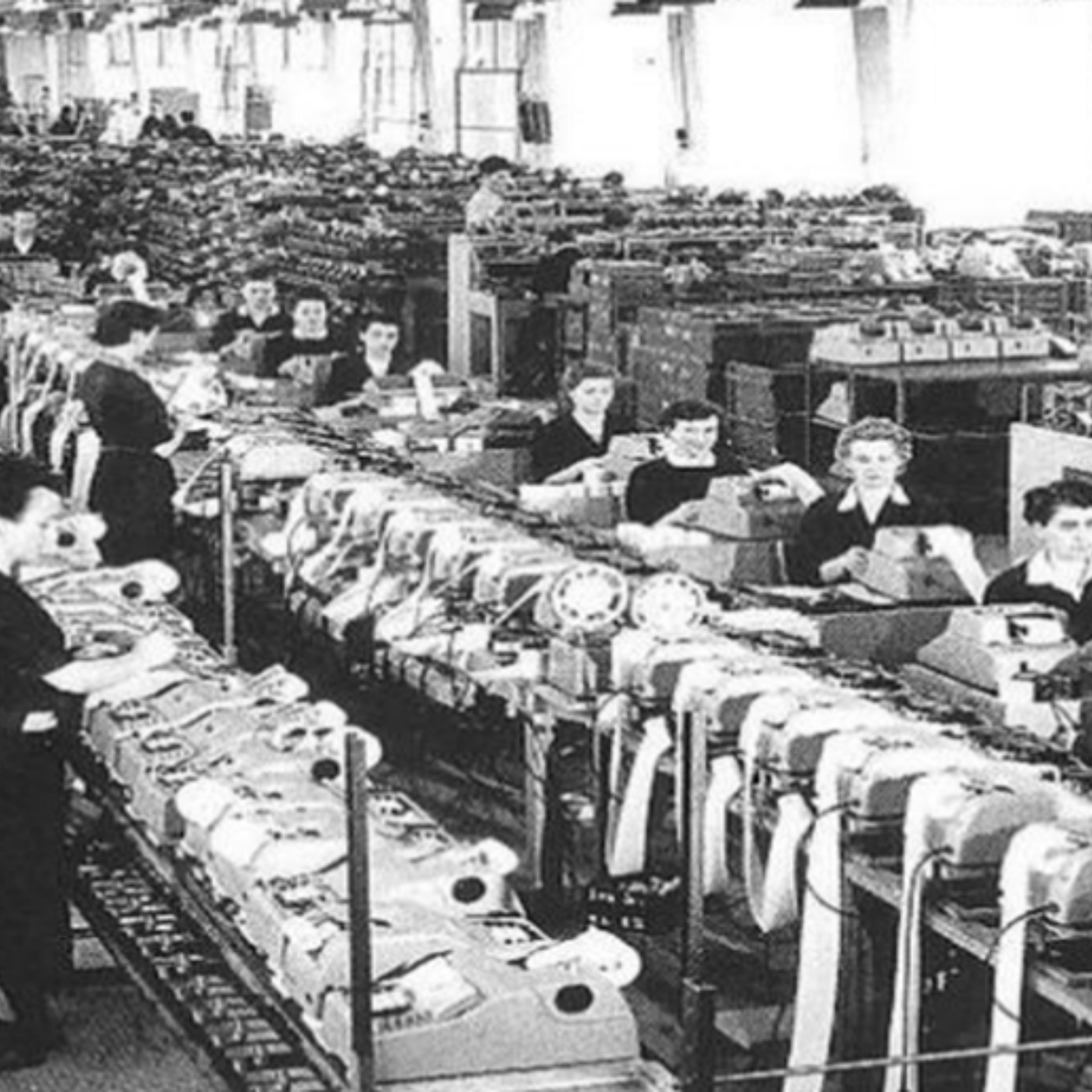
HOW WAS OUR
HISTORY WRITTEN?
From Hispano Olivetti factory to Westfield Glòries
Westfield Glòries: much more than a shopping center
Did you know that the history of Westfield Glòries is a bit peculiar🛍️? Today, we’re the most urban shopping center in Barcelona, right in the heart of the 22@ district, with over 100 stores, 30 restaurants, V.O.S.E. cinema, and a wide range of services. We’re the meeting point for friends, the weekend destination for families🛒, the study spot for students, and the after-work hangout for professionals. But… what if we told you that before becoming a shopping center, this place was once a typewriter factory🏭?

This is how you know us
You're about to know the history of the shopping center💥

but this is how everything started👆
The Hispano Olivetti factory was just the beginning
From the Hispano Olivetti factory to Westfield Glòries
In 1929, the company Hispano Olivetti S.A. was established in Barcelona, a subsidiary of the Italian company Olivetti, dedicated to the manufacturing of typewriters⌨️. Its original headquarters were located in the Poblenou neighborhood, and after the Spanish Civil War (1940), the company acquired a 10,000-square-meter plot on Gran Via de les Corts Catalanes, next to what is now Plaça de les Glòries📍. But what happened? How did it later become a shopping center🛍️?

1940: The beginning
In 1940, Josep Soteras i Mauri began construction of the industrial complex for the Italian company after acquiring the site on Gran Vía de les Corts Catalanes. Two years later, Hispano Olivetti opened, marking the beginning of everything.

1942: The Hispano Olivetti factory
The factory complex was designed with its industrial function in mind, but also as a model business, offering numerous services for its workers and families, such as a swimming pool and a nursery. The factory was built in a functionalist style.

1963: Olivetti, design and innovation
Typewriters began to gain significant popularity in the 1950s thanks to their radical changes in design; portable, comfortable, and easy-to-use models. Olivetti marketed the most innovative models on the market.

1987: The world changes and innovation takes over
Olivetti stood out with typewriters, but computing accelerated its decline. Workers went on strike to prevent layoffs. In 1987, the company closed, coinciding with the urban transformation ahead of the Olympic Games.

2017: Mariscal contributes to the visual identity of the new Glòries center.
Between 2013 and 2017, Westfield Glòries was renovated with a design by Javier Mariscal, preserving the post-Olympic spirit. The space blends modernity and industrial heritage, with icons like the original factory chimneys, honoring its past.
The evolution of Westfield Glòries
So now you know a new side of Westfield Glòries; and we’re not lying when we say it’s much more than just a shopping center🛍️. Westfield Glòries, or Glòries as many of you still call it, has always been a landmark for many; in the past, a workplace that provided jobs to many families until the arrival of the IT era🏭. Today, is one of the most visited shopping centers in Barcelona, where many of you spend day and night shopping, going to the cinema🍿 or grabbing a bite or drink at our restaurants🍹. Westfield Glòries is an iconic and well-known spot in Barcelona📍; whether you call it Westfield Glòries, “Glòries Shopping Center” or the former Hispano Olivetti factory❤️
And this is how everything started
You can come and discover more about the history of the Westfield Glòries shopping center at the exhibition we’ve set up, featuring some typewriter models that were once sold by Hispano Olivetti🏭. You’ll find the exhibition on the ground floor, entering through the cinema area📍




